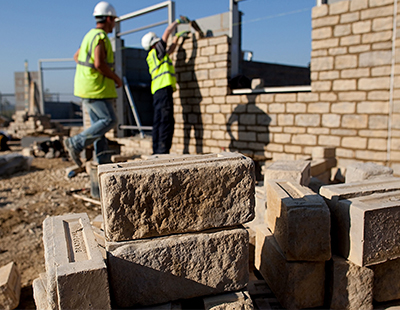This is not a company-specific issue and sales over the last few weeks will have declined for all UK developers by a similar extent.
The numbers highlight how customers who were not as close to moving at the beginning of the lockdown are now holding off. It is important to keep in mind that although construction sites are beginning to re-open, sales centres and show homes are not and therefore this sort of sales rate could continue until lockdown restrictions are loosened or even until a vaccine is found.
The winners and losers
There is a silver lining, though, and that comes in the form of high-quality listed players with solid liquidity that are at a big advantage.
Construction companies like Barratt are in a solid position from a liquidity perspective and are better placed that others to weather the ongoing challenges.
Barratt is in a very strong position with cash balances at £430 million and an undrawn facility of £700 million as per its latest update.
Other well-funded companies that are set to emerge as the winners include Breedon Group, Grafton Group, Travis Perkins, Kingspan and Persimmon. These are equally the companies that have sufficient flexibility to accumulate market share once lockdowns are full over and they gradually ramp up activity from a standing start.
Conversely, private companies with poor liquidity are at a great risk. Some players are taking a proactive approach raising equity from a position of strength such as Eurocell and Polypipe.
Market outlook
The long-term outlook for the sector is equally not without hurdles. There are several shifts that have been prompted by the shutdowns that are worth companies bearing in mind and preparing for:
• Changing commercial office footprints – The shift towards working from houses and apartments and away from offices may make businesses think about the investment they make in office spaces.
It is likely that more people will invest in their houses, for example, to build extensions. There is a question mark around whether there will still be the need for the same office footprint as it is likely that there will be a move to spending more time at home even when lockdowns are loosened.
• Shifting supply chains to the UK as ecommerce rises – Covid-19 has laid bare some of the fragilities in our supply chains as our links to other markets are impacted. This has raised the question as to whether we need more UK based warehouses which would in turn support the jump in ecommerce. Already a growing part of the economy, this is fast becoming the ‘new critical’.
• Protecting stakeholders vs. shareholders – Corporates were already moving towards a greater awareness and support offered to wider stakeholders as opposed to a narrow focus on shareholders.
This will likely be accelerated by Covid-19 and increased adoption of the approach that ‘we’re all in this together’.
The next weeks and months will be critical for the construction sector with several safety precautions to navigate. There are equally plenty of longer terms shifts and it’s the companies that prepare now that will emerge the strongest.
*David O’Brien is a Building Analyst at Goodbody
Market outlook
The long-term outlook for the sector is equally not without hurdles. There are several shifts that have been prompted by the shutdowns that are worth companies bearing in mind and preparing for:
• Changing commercial office footprints – The shift towards working from houses and apartments and away from offices may make businesses think about the investment they make in office spaces.
It is likely that more people will invest in their houses, for example, to build extensions. There is a question mark around whether there will still be the need for the same office footprint as it is likely that there will be a move to spending more time at home even when lockdowns are loosened.
• Shifting supply chains to the UK as ecommerce rises – Covid-19 has laid bare some of the fragilities in our supply chains as our links to other markets are impacted. This has raised the question as to whether we need more UK based warehouses which would in turn support the jump in ecommerce. Already a growing part of the economy, this is fast becoming the ‘new critical’.
• Protecting stakeholders vs. shareholders – Corporates were already moving towards a greater awareness and support offered to wider stakeholders as opposed to a narrow focus on shareholders.
This will likely be accelerated by Covid-19 and increased adoption of the approach that ‘we’re all in this together’.
The next weeks and months will be critical for the construction sector with several safety precautions to navigate. There are equally plenty of longer terms shifts and it’s the companies that prepare now that will emerge the strongest.
*David O’Brien is a Building Analyst at Goodbody









.png)










Join the conversation
Be the first to comment (please use the comment box below)
Please login to comment